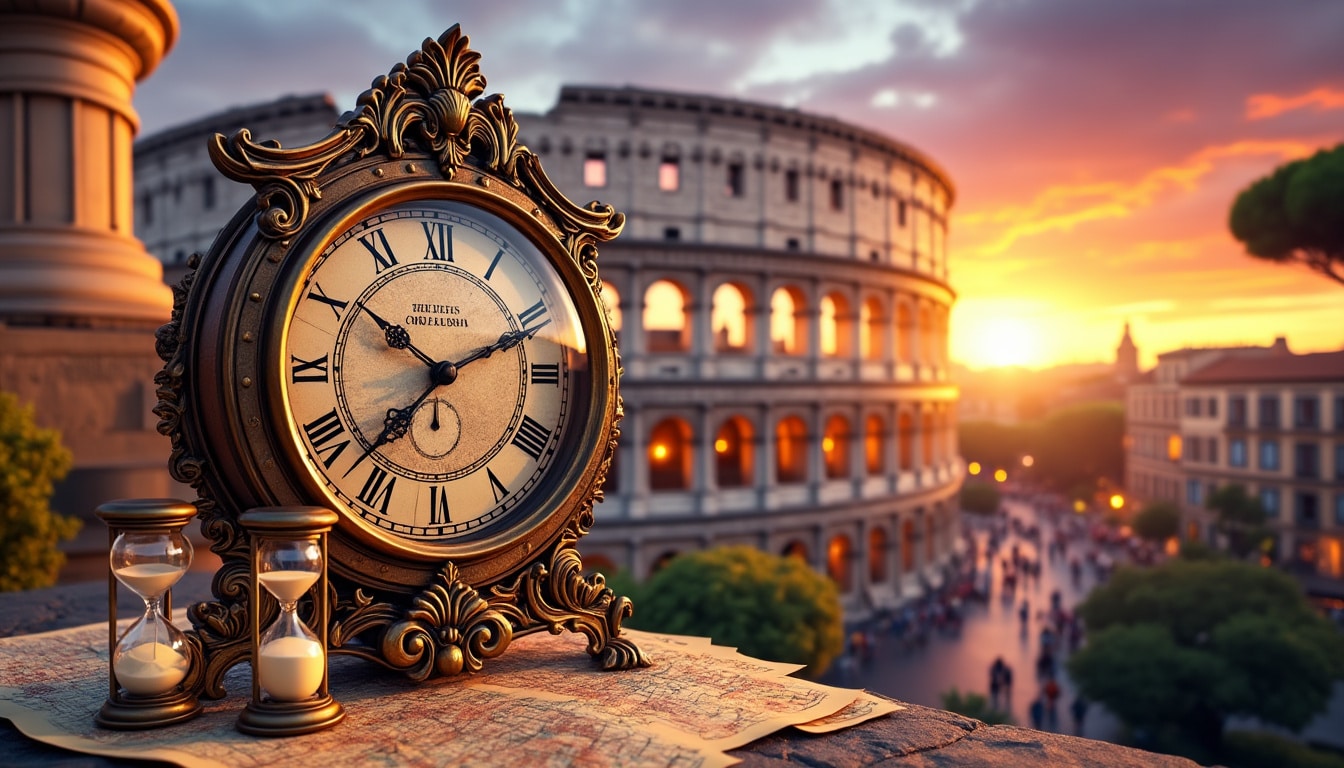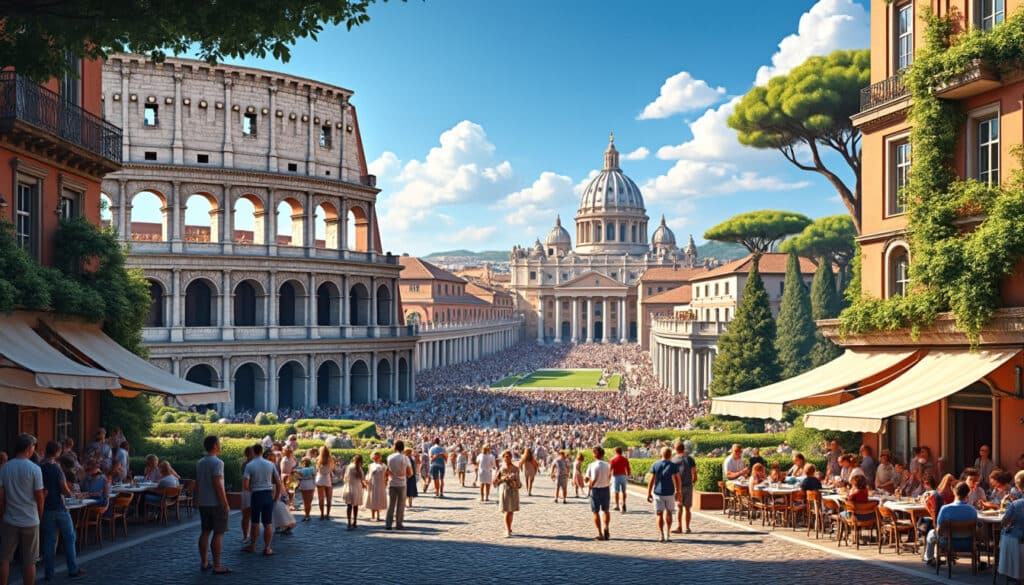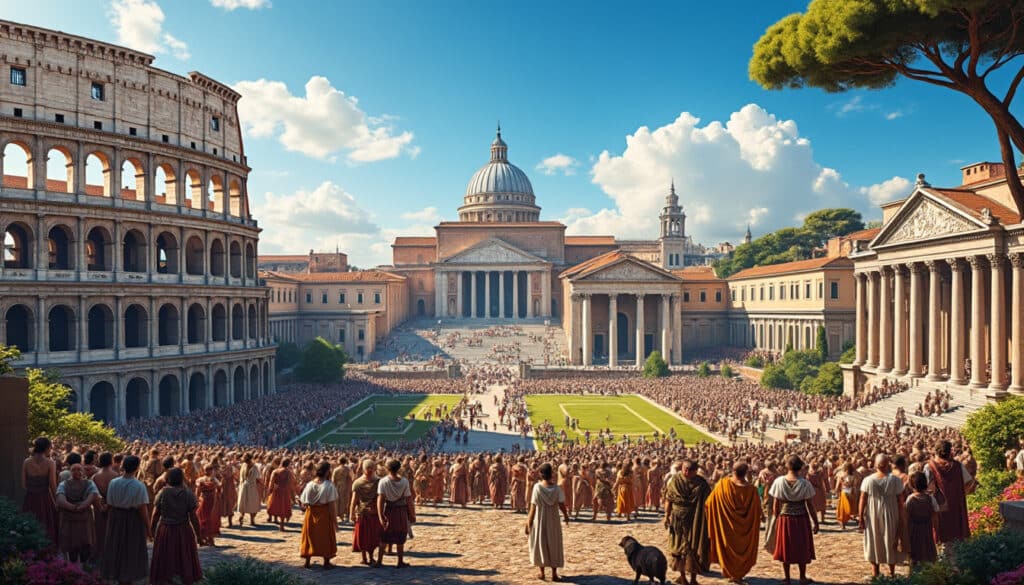Rome, the Eternal City, is renowned not only for its ancient wonders and culinary delights but also for its unique relationship with time. From the intricacies of the Rome Time Zone to the city’s historical fascination with clocks and timekeeping, the concept of time in Rome is both practical and cultural. As you traverse this city nestled in Italy’s heart, you’ll find that understanding its timekeeping is as essential as exploring its historic monuments or enjoying a gelato. Whether you’re coordinating a call across time zones or simply syncing your CET Watch, recognizing time’s role in daily Roman life is crucial for both residents and travelers alike. 🌅
Understanding the Time Zones in Rome
Within the dynamic spectrum of Europe’s time zones, Rome stands prominently in the Central European Time (CET) zone, with a standard offset of UTC+1. This alignment ensures that the Eternal City Time synchronizes harmoniously with many other European capitals. The familiarity of the CET becomes even more relevant during the transition into winter and the onset of summer.
In 2025, the shift into Central European Summer Time (CEST) occurred on March 30. At precisely 2:00 AM, clocks “spring forward” one hour, transforming the time to 3:00 AM. Such adjustments, observed not only in Italy but across many European nations, signify the start of longer days. Conversely, as autumn approaches, on October 26, the clocks “fall back” one hour at 3:00 AM, reverting Rome’s time back to 2:00 AM. This cyclical routine seamlessly integrates with residents’ lives, reflecting both seasonal and traditional adherence to daylight fluctuations.
The implications of this time adjustment are vast. Travelers must carefully plan schedules, meeting arrangements, and journeys throughout Europe, considering these alterations. Time differences relative to international cities bring unique challenges, particularly for intercontinental communications. For instance:
- 🌍 Rome is 9 hours ahead of Los Angeles during CEST.
- 📞 Rome often communicates six hours ahead of Toronto during standard periods.
Understanding these adjustments and their timing is fundamental, especially for those coordinating events or managing long-distance communications.
| City | Time Difference from Rome | Time During CEST |
|---|---|---|
| New York | -6 hours | 8:30 PM |
| Tokyo | +7 hours | 9:30 AM |
| London | -1 hour | 1:30 AM |
The day-to-day events like public transportation schedules, which are pivotal for tourists, are also influenced by such changes. Being vigilant about time zones assists tourists in planning efficiently, from scheduling tours to timing dinners amidst the romantic Roman evenings.

The Cultural Significance of Time in Rome
Rome’s relationship with time transcends the mere ticking of a clock. Historically, Romans have been meticulous about timekeeping, with their innovations profoundly influencing global standards. Deep within the annals of Roman history lies the legacy of ancient timekeepers who equipped the city with sundials and early mechanical clocks.
The fascination began during Rome’s ancient days with the establishment of sundials across public squares. These Roman Sundials, using the sun’s movement, helped residents align their daily routines. Today, remnants of these historical innovations can still be found throughout the city, adding a picturesque layer to Rome’s storied past. One iconic example is the meridian line in the Church of Santa Maria degli Angeli e dei Martiri, an exemplification of precision astronomy from centuries ago.
However, as time evolved, so did the technologies. Clockmakers of the Renaissance era crafted exquisite mechanical clocks that beautified towers and cathedrals, heralding an epoch where functionality fused with artistry. In modern Rome, these pieces remain cherished artifacts that continue to mesmerize both locals and global aficionados.
- ⏳ The Pantheon’s oculus acts as a natural timekeeper by casting sunlight that marks the passage of hours.
- 🏛️ The Aventine Keyhole frames a view of St. Peter’s Basilica, eloquently expressing time’s passage and spatiality.
Interestingly, time in Rome is not just bound by seconds or minutes; it flows like the Tiber, measured through experiences, interactions, and the vibrant life that defines the city. This notion of time persists even today, as weekly rhythms pivot around lively markets, religious observations, and communal gatherings, each a testament to Rome’s unique temporal elegance.
Practical Timekeeping and Navigation in Rome
When navigating Rome, both practically and culturally, understanding how time interfaces with its architecture and daily life is paramount. This extends beyond just adjusting to the Rome Time Zone but also syncing with local customs and traditions.
Public transport runs like clockwork within areas infused with rich history, connecting the past to the present. The Roman Metro, buses, and trams adhere to strict schedules. Travelers rushing to catch the beautiful sunrise strolls near the Colosseum will find accurate information on these transit systems crucial for timely arrivals.
Meanwhile, gastronomic adventurers timing their visits to famous trattorias and osterias need punctuality, particularly when dining spots serve exclusive seasonal dishes.
| Transportation Mode | First Service | Last Service |
|---|---|---|
| Metro Line A | 5:30 AM | 11:30 PM |
| Bus 40 Express | 6:00 AM | 12:00 AM |
| Tram 8 | 5:00 AM | 12:30 AM |
These public systems ensure you maximize every minute, from lingering by the Trevi Fountain to embarking on spontaneous explorations of ancient ruins.
Even when engaging in leisure by the vibrant piazzas or roaming expansive parks, punctuality remains significant. Roman life operates in vibrant synchrony, from public squares enlivened by events to local cafes bustling with activity, contributing to a unique urban rhythm.
The Impact of Italian Watches on Global Timekeeping
Renowned globally for their exquisite craftsmanship, Italian Watches epitomize precision and elegance. Much like wine or fashion, they possess a distinguished reputation underscored by superior quality and timeless style.
Originating from Italian tradition, these watches reflect the cultural conjunction where artistry meets practicality. Historical brands embody this legacy through designs influenced by Rome’s rich architectural beauty. As a result, each watch captures the essence of its past, paralleling the pride Romans hold towards their heritage.
Simultaneously, contemporary Italian watches embrace both historic craftsmanship and modern technological advancements, sporting features like dual-zone displays. This accommodates the needs of global jet-setters, allowing effortless adjustment from the Vatican Time to international destinies at a flick of the wrist.
- ⏰ Italian brands like Panerai and Bulgari blend innovation with tradition.
- 🕰️ Models often feature Roman numerals—an homage to Rome’s eternal charm.
- ✨ Exclusive designs draw inspiration from Rome’s iconic sites, from the whimsical features of St. Peter’s Basilica to the refined simplicity of the Spanish Steps.
The juxtaposition of historic and contemporary realms within Italian watchmaking demonstrates an unparalleled commitment to time, culture, and legacy—an element respected and cherished not only in Rome but around the world.
Famous Timepieces and Sundials in Rome
Different eras have witnessed the evolution of timekeeping, and Rome, with its history-laden streets, is a testament to this progression. The city’s Roman Sundials and other clock artifacts are vibrant reminders of these advancements, intricately crafted to mark the passage of centuries.
One of the most noteworthy is the sundial from the ancient Roman Forum, an emblem of the classical age. Meanwhile, the Trinità dei Monti Clock represents the Renaissance era, showcasing Rome’s blend of science and art. Such historic pieces are not merely structures but narratives of the city’s ever-rhythmic pulse.
Tourists and history enthusiasts can marvel at these timepieces across the city, discovering the meticulous artistry that underscores each creation. Timepieces within St. Peter’s Basilica stand as icons harmonizing spiritual and temporal dimensions.
| Timepiece | Location | Era |
|---|---|---|
| Roman Forum Sundial | Roman Forum | Classical |
| Trinità dei Monti Clock | Spanish Steps | Renaissance |
| St. Peter’s Timepieces | St. Peter’s Basilica | Baroque |
These monuments not only guide present-day routines but serve as vessels into Rome’s rich past, allowing visitors to envisage an era where sundials determined social schedules and essential meetings.
- 🕌 Sundials from Pompeii show classical engineering prowess.
- ⏲️ The Solar Clock of Augustus reflects Rome’s ancient astronomical knowledge.
- 🏁 The Clock Tower within the Capitoline Hill embodies municipal power throughout history.
Ultimately, these timekeepers reflect the unyielding bond between Rome’s historical evolution and its unwavering relationship with time.
Frequently Asked Questions
- ❓ How does daylight saving time impact Rome’s time zone in 2025?
Daylight Saving Time in Rome begins on March 30, 2025, moving from CET to CEST by setting the clocks forward one hour, and ends on October 26, when clocks revert back by one hour. - ❓ Are there any famous clockmakers associated with Rome?
Yes, historical clockmakers like the Ranieri family were renowned for their meticulous timepieces in the vivacious periods of Renaissance and Baroque art. - ❓ What is the usual weather during sunrise in Rome?
As of May 2025, sunrises around 6 AM often experience clear skies with temperatures generally reaching around 15°C, enhancing scenic views over Rome.
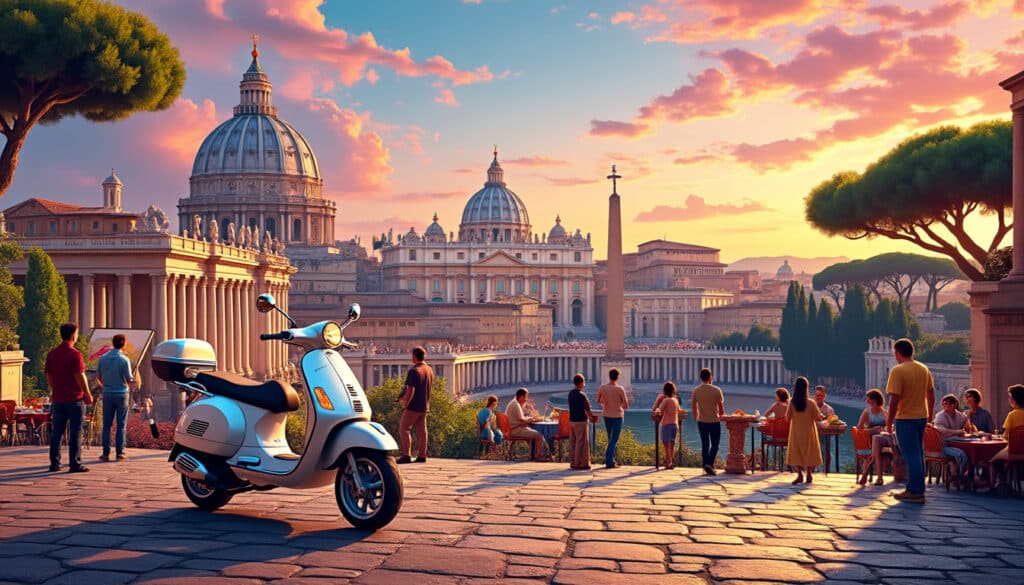
Fun Facts & Curiosities About Rome
Rome, Italy’s bustling capital, is a city that resonates with historical grandeur while offering the vibrant pulse of modern life. Known as the “Eternal City,” it stands as a testament to the past millennia, inviting countless visitors to explore its…
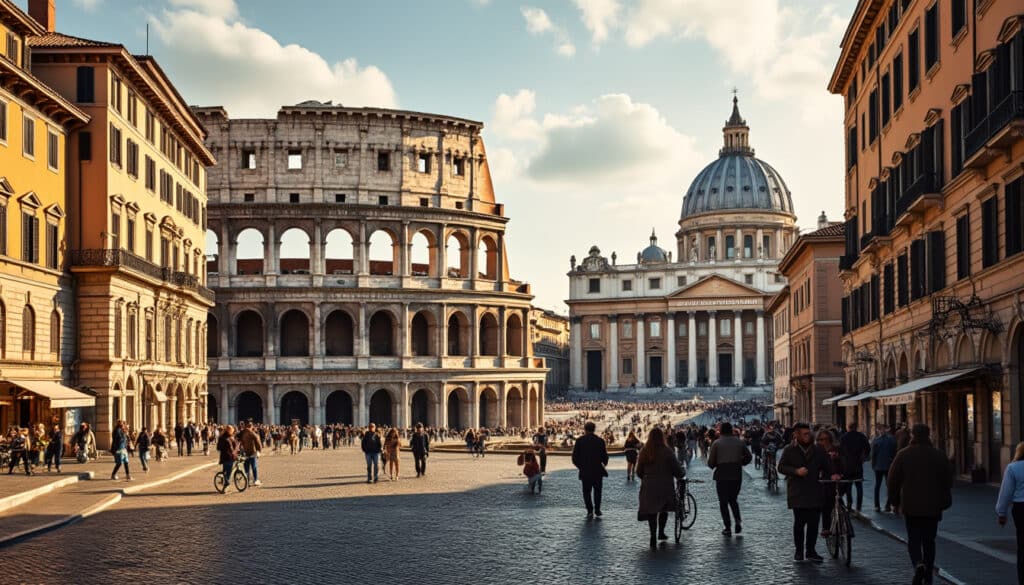
Architecture and urban features of Rome
Rome, the Eternal City, is renowned worldwide not just for its rich history, but for its architectural splendor and urban planning that have inspired and influenced countless generations. From the majestic Colosseum to the serene beauty of Vatican City’s Basilica,…

Life in ancient Rome was a tapestry of daily routines, social dynamics, and bustling city life. The average Roman’s day was a blend of work, leisure, and social obligations, set against a backdrop of grandeur and complexity that defined the…
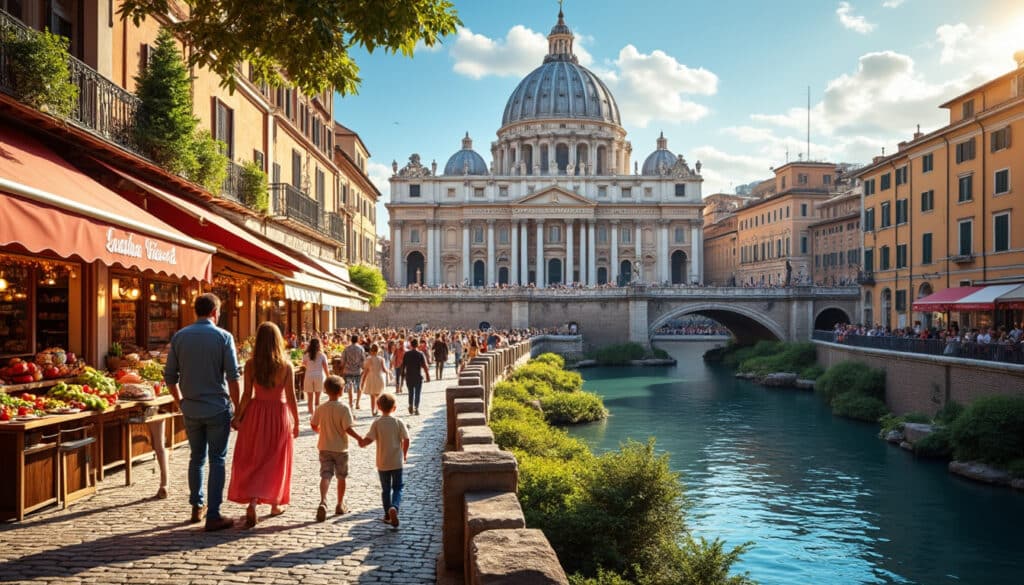
Demographics and geography of Rome
Rome is a city that effortlessly marries the grandeur of its past with the vibrancy of the present. As Italy’s capital, it stands as a testament to a rich history, enshrined in its cobblestone streets, legendary ruins, and breathtaking art.…
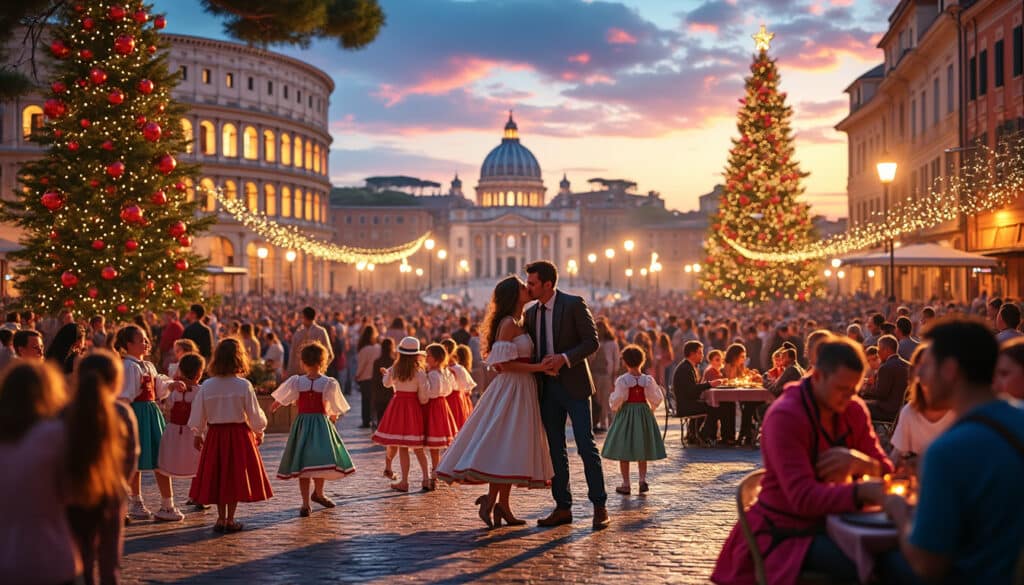
Holidays and celebrations in Rome
Rome, a city where the past and present coalesce seamlessly, offers a vivid tapestry of holidays and celebrations that captivate both locals and visitors alike. From sacred religious festivities that have stood the test of time to contemporary events that…
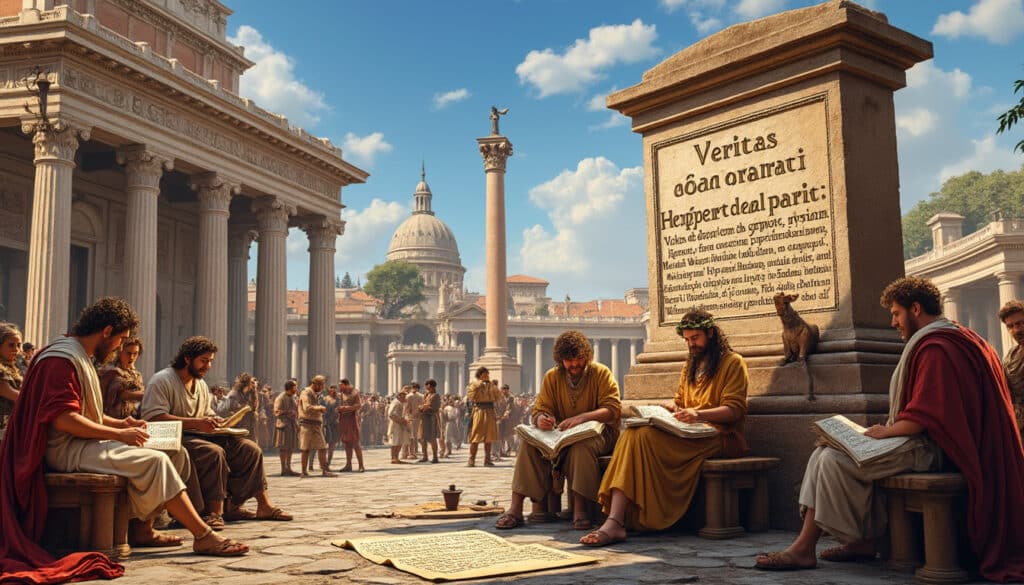
In the heart of Italy lies Rome, the Eternal City, with a rich linguistic tapestry that spans from the ancient era to the bustling present. Known for its historical landmarks and vibrant culture, Rome’s linguistic evolution is a journey through…

Local tips for tourists in Rome
Planning a trip to Rome? While the Eternal City is brimming with iconic landmarks, there’s so much more to experience when you delve beyond its tourist-centric façade. Embrace Rome like a local and discover hidden treasures, savor authentic flavors, and…
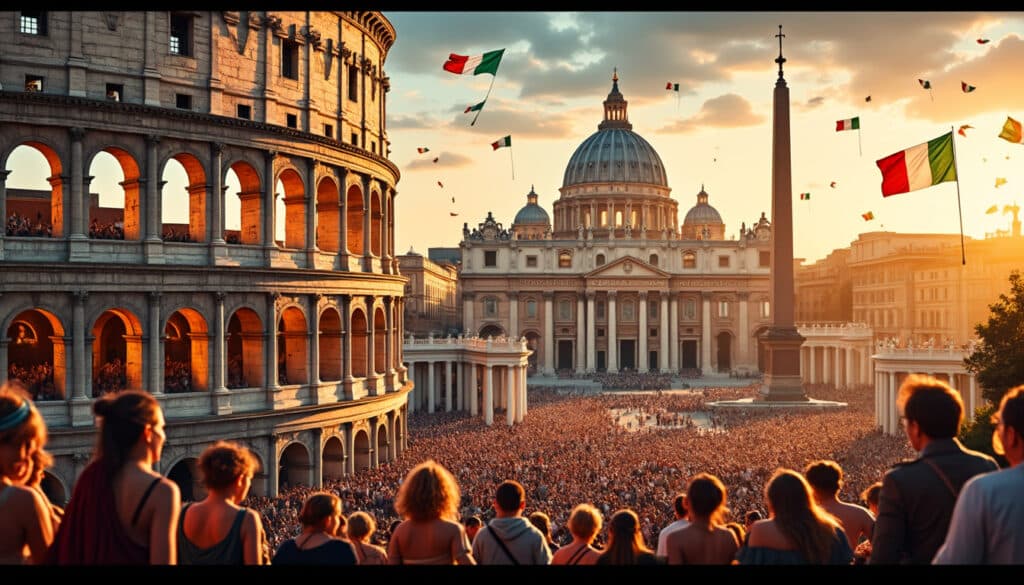
Names, flags, and identity of Rome
As you traverse the bustling streets of Rome, you’ll encounter a city that proudly wears its history and identity on its sleeve, quite literally! From the vibrant flutter of the Italian tricolor to the ancient symbols ingrained in its own…
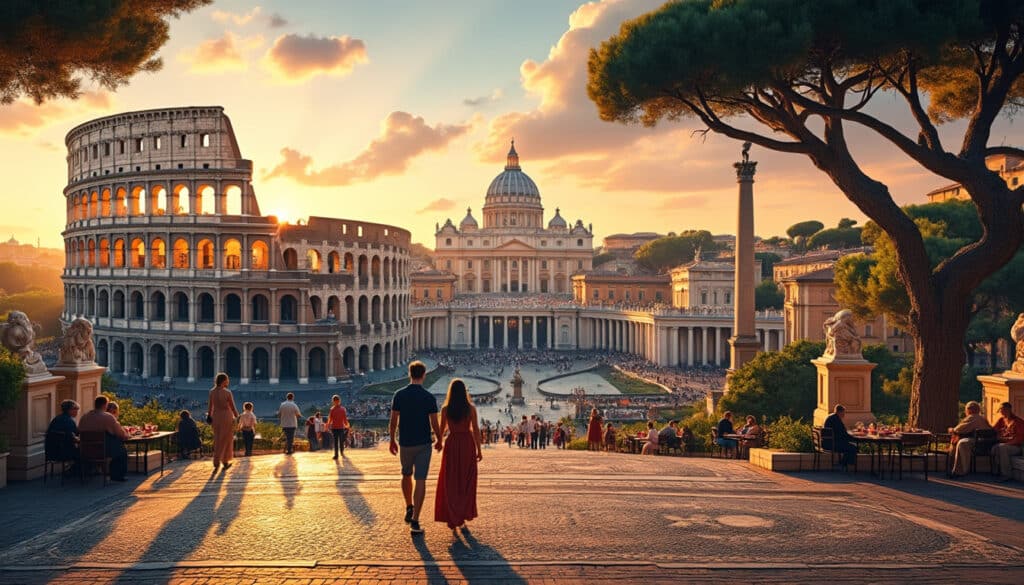
Reputation and identity of Rome
Once the heart of a vast and powerful empire, Rome today stands as a city woven seamlessly into the fabric of time—a modern metropolis where ancient ruins tell tales of a formidable past. These storied stones and cultural echoes are…
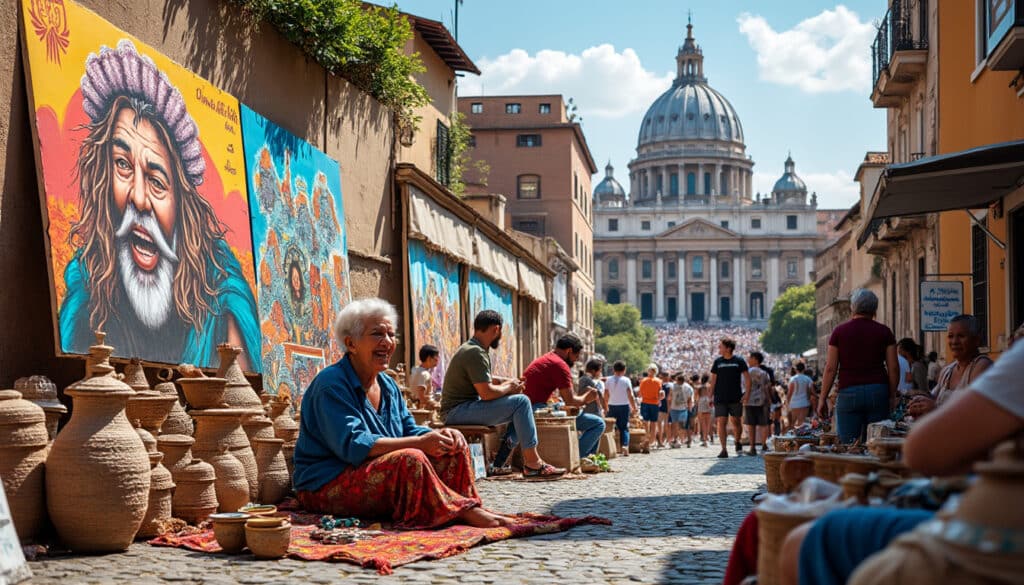
Unusual facts and social issues in Rome
Rome is a city where the whispers of the past intertwine with the vibrancy of today. As we stroll through its ancient streets, we uncover an eclectic mix of unusual facts and prevailing social issues that paint a vivid picture…
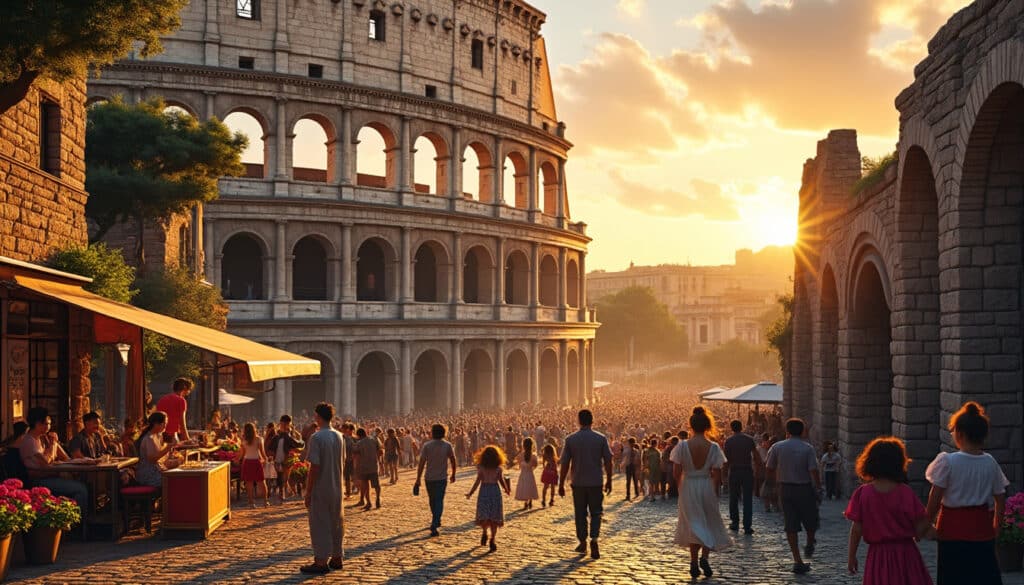
What does Rome look, smell, feel like?
Ah, Rome — the Eternal City that enchants visitors with its intoxicating blend of history, culture, and sensory experiences. This vibrant city is a tapestry woven with the echoes of ancient gladiators, the aromas of some of the world’s most…

